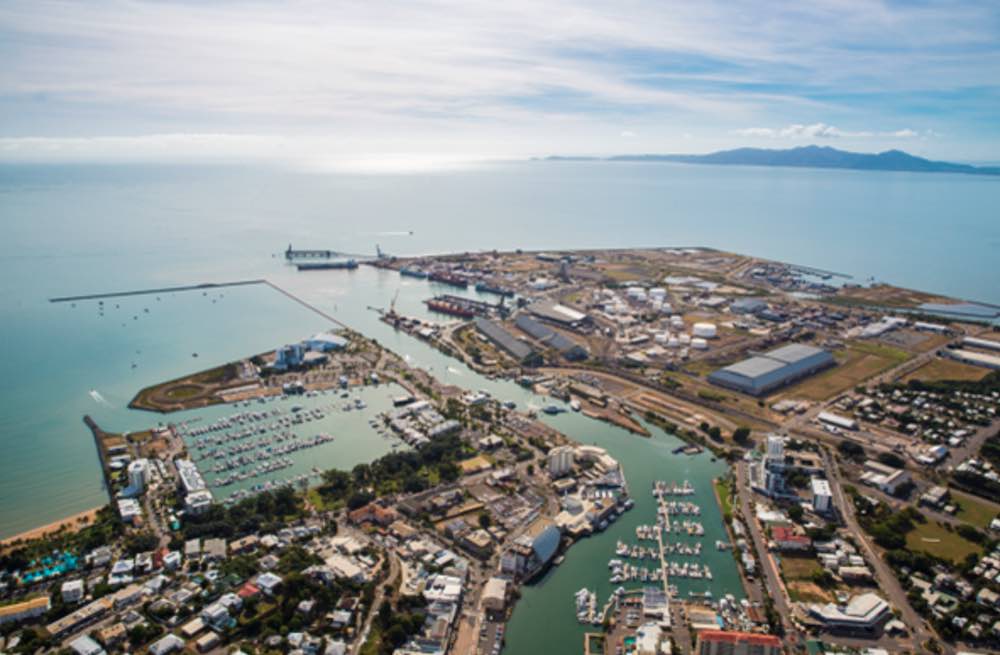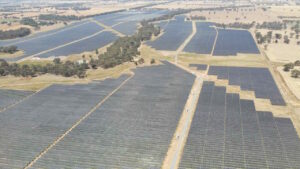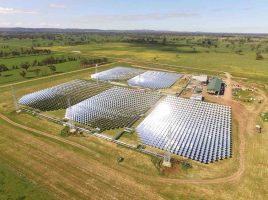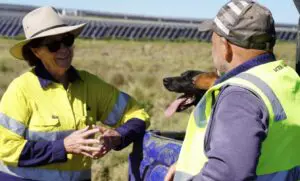Two regional Queensland cities have been hailed as the “solution” to Australia’s renewable energy ambitions, with investors saying Townsville and Gladstone have a unique combination of assets that could unlock clean export opportunities.
Investors and experts discussed Australia’s growing renewable power industry at the Smart Energy Queensland expo on Tuesday, which included one of the first public appearances of former state premier Annastacia Palaszczuk in her energy ambassador role.
But renewable energy advocates also warned the industry faced challenges as federal and state governments needed to agree on a energy pathway and to introduce rules to ensure projects did not damage the environments or communities in which they operated.
Quinbrook Infrastructure Partners co-founder David Scaysbrook told the conference Australia had a huge opportunity to create jobs, cut emissions and create long-term export income with renewable energy investments.
Two regional Queensland cities, he said, had the ideal combination of access to inexpensive wind and solar resources and large ports to make it work.
“In this state, there are two places in particular that are amongst the world’s best locations that you could possibly imagine to triangulate a place for green manufacturing: Gladstone and Townsville,” he said.
“We search the planet for places like Gladstone and Townsville.”
To make the most of the opportunity and compete with projects in regions such as the Middle East, Mr Scaysbrook said, Australian firms needed to bring processing onshore to create green metals such as iron, environmentally friendly cement, and sustainable aviation fuel that were in high demand overseas.
The Next Economy chief executive officer Amanda Cahill said with the right support, Australia’s potential impact on the supply of renewable energy and green products worldwide could be significant.
But she warned Australia would need to strict rules for renewable energy projects to ensure they did not unfairly damage the environment or local communities during their development.
“We’re hearing increasing concerns from communities and industry about the need for strong protections for the environment as we develop not only renewable energy but other industries as well,” Dr Cahill said.
“Concerns include the impact on land biodiversity and water, especially because we don’t actually have a lot of the data we need to actually work out where the areas that need protection are.”
Investors and developers would also need clear direction from both state and federal governments, Smart Energy Council chief executive John Grimes said, rather than mixed messages about nuclear power versus renewable energy.
“The market itself is not going to make this transition – the market doesn’t send the signal to say ‘invest ahead of turning off the old industries’,” he said.
“That’s got to be planned and led by governments and you’ve got to have a government that’s all in on that transition.”
Earlier this year, the federal opposition announced a policy to build seven nuclear reactors to meet Australia’s power needs, while the Labor government has backed renewable energy projects to supply power and cut emissions by 43 per cent in 2030.
AAP










